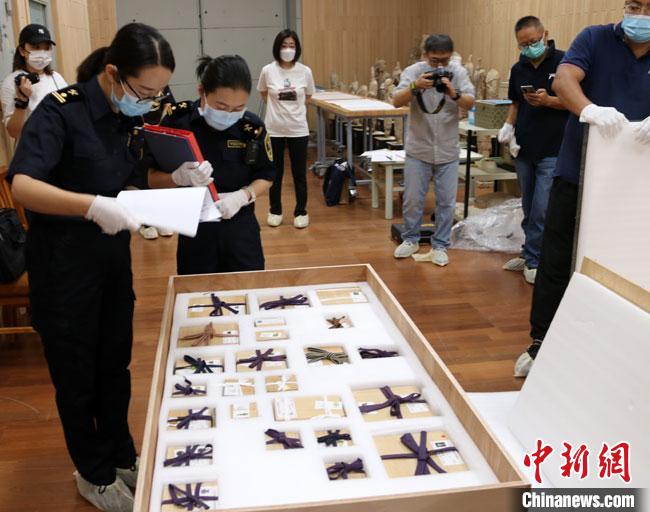“Dazzling Glow-Ancient Glassware Selections from Hirayama Ikuo Silk Road Museum Collections” started at Kao Grotto at Dunhuang on August 8th to present more than 300 ancient glassware from 37 countries and regions in Europe, Western Asia, Middle Asia and Eastern Asia. From the perspective of these exhibits, audience could have a clear understanding of the wisdom and innovation of ethnic groups along the route as well as the history of the communication and mutual learning of various culture.
The exhibits belonged to the deceased painter named Hirayama Ikuo who collected ancient glassware relating to the Silk Road. The exhibition jointly held by the Hirayama Ikuo Silk Road Museum and Dunhuang Academy China had been postponed for a year. The goal was to promote the spirit of “the red cross of cultural asset” and to push international cultural communication and mutual learning.
The Silk Road is a passage linking the eastern and western civilization. For thousands of years, the Silk Road had witnessed multiple kinds of cultural communication between China and the west, promoting the development of world civilization. The art of glassware is one of the achievements of mankind’s wisdom. It has been transported to China from the west and has been playing an important role in the cultural life of the west, so itself is a representative of exchanges among civilizations.
“Hirayama Ikuo set his footprint in Bmyn Caves in Afghanistan and Angkor Wat in Cambodia.”, said Zhao Liangsheng, secretary of the CPC committee of Dunhuang Academy China. He also said that Hirayama Ikuo focused a lot on the culture of the Silk Road and helped to realize world peace. He came up with the idea of “the red cross of cultural asset” and carried it out in various ways. In addition, he spent a lot of effort to protect and rescue world cultural heritage.
Zhao Shengliang said that Hirayama Ikuo contributed significantly to the protection and research of the Dunhuang Caves. The exhibition was an evidence proving that “the one with high moral standard would always have friends”. Against the background of historic background, China and Japan would always accompany each other and devote to the protection, research and promotion of the cultural heritage along the silk road, so as to contribute to the people-to-people connection between countries in a new era.
“Glass has a long history, starting from more than 3500 years ago in ancient Western Asia and areas around Mediterranean. Through the Silk Road, glassware made in Persia were brought to China in Tang Dynasty and Japan in Nara Age.”, said the curator of the Hirayama Ikuo Silk Road Museum in Japan. He also hoped that through the visit to the exhibition, visitors could experience how amazing the cultural relics along the Silk Road were and how outstanding those carefully-handmade pieces of artwork could be.
The curator expressed that the 325 pieces of exhibits needed to travel 5000 kilometers from Yamanashi Prefecture to Dunhuang, a journey about 5000 kilometers from the east to the west. It’s just like that those items had traveled along the Silk Road before being presented to the public. Many difficulties had been overcome in the maintenance and exhibition due to the long history of those glassware.
Envoy extraordinary and minister plenipotentiary from Japan’s Embassy to China said that Hirayama Ikuo had collected plenty of precious cultural relics relating to the Silk Road through all these years. This was one of the series of exhibitions of those cultural relics. 2022 will be the 50th anniversary of the normalization of diplomatic relations between Japan and China, Japan’s Embassy will continue to push forward the exchanges in culture and art with China.
To guarantee that exhibits would go through the customs fast, the Lanzhou custom authority of the airport in Dunhuang established a green passage with the airport in the capital of China. As a result the import transshipment was reduced to only 3 processes lasting 5 hours from 7 processes lasting 100 hours. Dunhuang Academy China went through procedures including a one to exempt guarantee, so as to be sure that the exhibition would be held on time.
location:Home/Culture Exchanges
Ancient Glassware from 37 Countries and Regions were Exhibited at Mo Kao Grotto at Dunhuang to Show the History of Cultural Communication of the Silk Road
Date:2021-08-09 10:12:56 Source:China News Service Website Author:Organizing Committee
